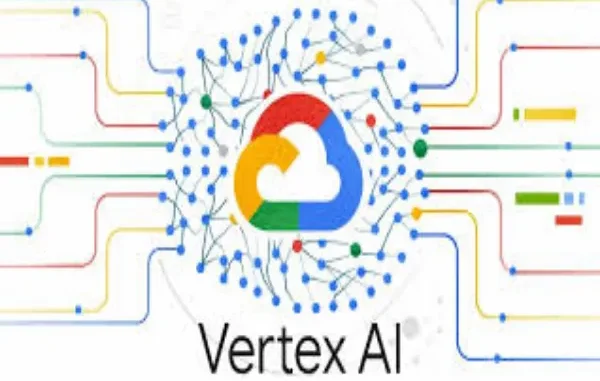
Let’s take a deeper look into those top AI-based platforms that are revolutionising the process professionals take to big data and analytics.

Google Cloud Vertex AI
Google’s Vertex AI still tops the charts in 2025, with an integrated platform for data scientists and analysts. The tool handles all your machine learning (ML) workflow, including data ingestion, everything end-to-end up to deployment.
Key Features:
- AutoML for model training, no code required.
- Seamless connection to BigQuery to perform real-time data analysis.
- Powerful visual dashboards for the non-tech people.
Best For: Enterprises looking for complete AI lifecycle management.
Microsoft Azure Synapse Analytics
Azure Synapse Analytics combines big data and data warehousing together in one environment. Its AI integrations provide companies the ability to query large datasets smoothly and obtain predictive insights.
Why It Stands Out:
- Plays well with Power BI for visualization.
- Embed machine learning and cognitive services.
- Comprehensive data governance and compliance capabilities.
If you have finished a data analyst course, this software provides the scalability and automation capacity to process sophisticated competent analysis of data sets.
IBM Watsonx.ai
IBM Watsonx.ai has developed into a leading AI model governance and responsible analytics provider. It uses NLP with machine learning to give contextual insights.
Highlights:
- Supports structured as well as unstructured data.
- Delivers XAI for improved transparency.
- Great for industries such as health and finance.
Pro Tip: Round out your tech skills with data analytics courses to better utilize platforms such as Watsonx.ai.
Tableau GPT
The data viz pioneer, Tableau made a big leap in 2025 by integrating generative AI. Tableau GPT is able to automatically build visual dashboards from natural language questions.
Example: “Show me the top selling regions,” and Tableau GPT will produce interactive visuals with insights in seconds.
Why It Matters:
- Makes analytics accessible to all business users.
- Minimizes the requirement of technical coding.
- Can be easily used with Salesforce Einstein Analytics.
Amazon SageMaker
Amazon SageMaker enables analysts to create, train and deploy AI models at any scale. SageMaker gets further baked into AWS analytics offerings in 2025, delivering end-to-end automation from data pipelines.
Standout Features:
- One-click deployment of ML models.
- Built-in Python and Jupyter notebooks.
- Real-time data inference and forecasting.
For students learning a data analyst course, becoming proficient in SageMaker is another sought after skill you can add to your resume.
DataRobot AI Cloud
DataRobot AI Cloud: The go-to platform for enterprises looking to scale AI. DataRobot’s AI Cloud offering is popular amongst those organizations wanting to broaden the use of their machine learning models. It is an easy-to-use tool that supports ML lifecycle, and after using KNIME, non-developers will do quite fancy predictive models.
Why It’s Popular:
- Automated feature engineering.
- Bias detection and model explainability.
- Industry-specific pre-trained models.
This is a system that enables the connection between business analyst and data scientist in such a way that analytics projects become more operationalized than they are today.
Snowflake Cortex AI
Snowflake’s Cortex AI stitches together data warehousing and artificial intelligence. It offers a secure and scalable platform to analyse structured and semi-structured data in real time.
Key Benefits:
- AI-driven query optimization.
- Pretrained large language models (LLMs) for automation.
- Seamless integration to the popular BI tools.
Best For: Companies leveraging multi-cloud implementations and need consolidated data management.
Qlik Sense AI
Qlik Sense improves with Generative AI and Predictive Analytics. Wizards of Logic are among the best and most-selectable analytics tool platforms.
Top Features:
- Augmented analytics with AI-driven suggestions.
- Natural language query interface.
- Cross-platform compatibility for data visualization.
Qlik Sense enables users to act on insight immediately provided by their data for greater growth.
RapidMiner AI Hub
AutoML with RapidMiner. One of the well-known tools in AutoML sector, here we show how to use it. The 2025 AI Hub has more sophisticated collaboration capabilities and allows teams to create, validate, and deploy models at a faster rate than ever before.
Why It’s Trending:
- Drag-and-drop ML design.
- Predictive model monitoring.
- Cloud and on-premise flexibility.
For data analysts students, I would recommend RapidMiner to try with the real-life datasets.
SAS Viya
SAS Viya is one of the best tools for advanced analytics. Its 2025 iteration includes an AI-powered interface to make short work of gnarly data workflows and connects with open-source tools, such as Python and R.
Key Highlights:
- Scalable for big data environments.
- Strong NLP and computer vision features.
- Emphasis on security and compliance.
“Financial institutions and healthcare providers need precision in their models, with significant auditability, and SAS Viya provides that.”
How AI is transforming the role of data analysts
Artificial intelligence tools aren’t replacing data analysts — they are rather creating new opportunities for them. Instead of having to manually prepare and cleanse data for hours to process and analyse, analysts can focus on decision making through story telling, strategic thinking and business impact.
Using AI, analysts should be able to:
- Extract actionable tactics from machine-generated insights.
- Work closely with data engineers to improve pipelines.
- You will constantly learn and use new tools.
This is what a certified data analyst course teaches you how to do effectively: join technical insights with business skills.
Top Learning Paths for Aspiring Data Analysts
If you are one of those looking for a new job or to land on your dream job this 2025, then taking data analytics courses is one of the best things that you can do. These programs typically cover:
- Data cleaning and visualization.
- Machine learning and predictive analytics.
- AI integration for business intelligence.
- Utilities such as: Python, Power BI, Tableau etc.
For practitioners coming from non-technical fields, structured data analyst programmes are the ideal way to learn AI fundamentals and analytics pipelines.
Ways AI Tools Transform Business Decision-Making
AI-driven analytics is not just a tech trend—it’s the smart way to do business. Here’s how those tools are transforming businesses:
- Decision Making Speed – Companies can take decisions on-the-fly with real-time dashboards.
- Personalized Recommendations – AI models provide customized insights on customer activity.
- Cost Optimization – Limited human effort and resource wastage due to automation.
- Predictive Forecasting – Businesses will be able to predict changes in the market before they happen.
- AI is Bias-free – AI reduces the bias and error in data interpretation caused by humans.
Final Thoughts
In 2025 and beyond, AI is going to continue shaping the future of data analytics by making tools smarter and analysts more strategic. It’s easy to keep up-to-date though, so long as you’re prepared to learn and integrate the new technologies.
If you’re a student, professional or a business owner interested in future proofing your career or industry, consider a data analyst course that will teach you how to fully capture AI’s potential.
The future belongs to the people who know how to read it into intelligence—and with AI riding shotgun, there’ll be no stopping you.






Leave a Reply